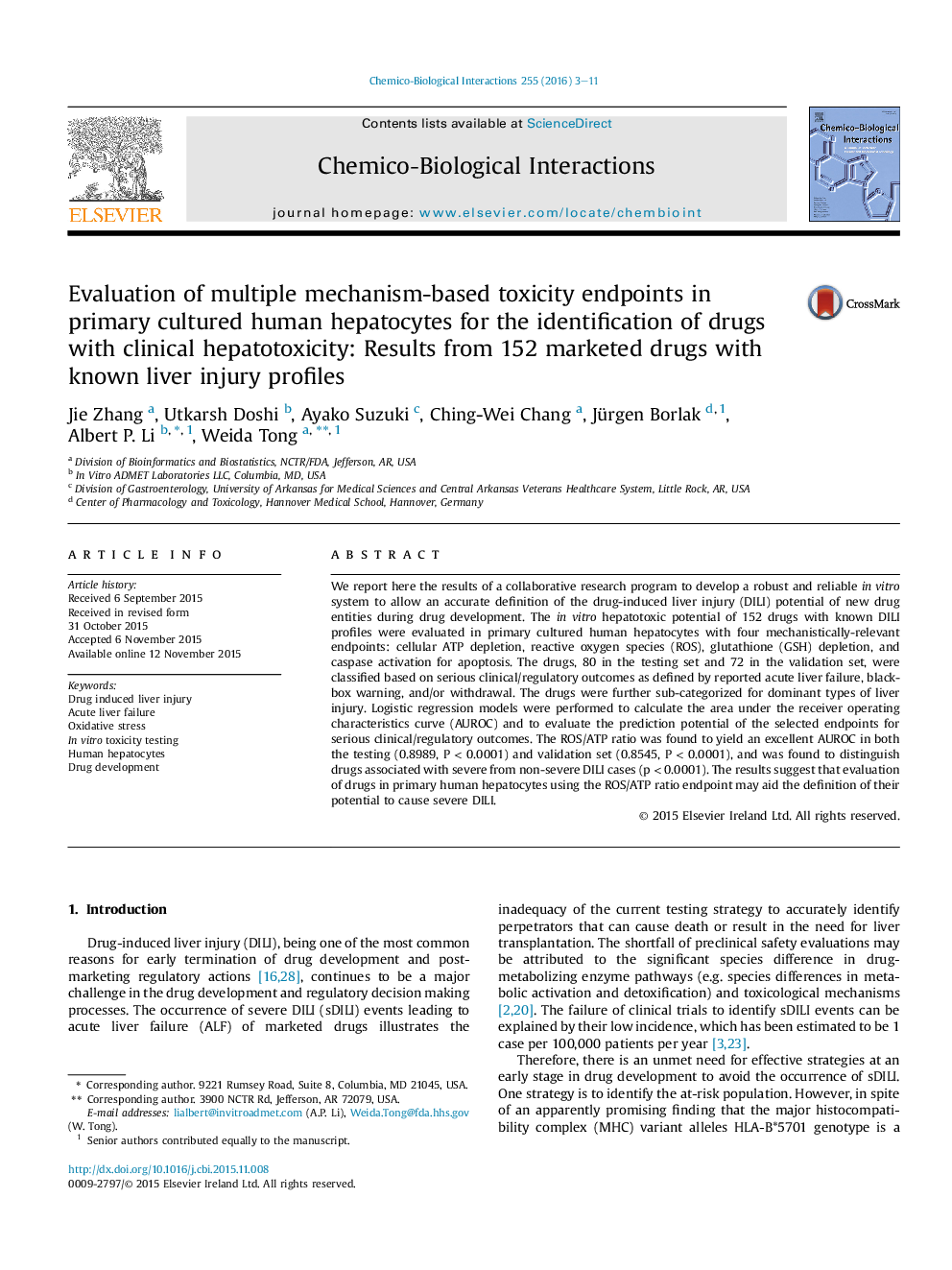| Article ID | Journal | Published Year | Pages | File Type |
|---|---|---|---|---|
| 2579909 | Chemico-Biological Interactions | 2016 | 9 Pages |
•152 drugs with known DILI profiles evaluated in primary cultured human hepatocytes.•Four toxicological endpoints: ATP, ROS, GSH, and caspase.•AUC of dose–response curves and receiver operating characteristics used in data analysis.•The ROS/ATP ratio accurately identified drugs associated with severe DILI.
We report here the results of a collaborative research program to develop a robust and reliable in vitro system to allow an accurate definition of the drug-induced liver injury (DILI) potential of new drug entities during drug development. The in vitro hepatotoxic potential of 152 drugs with known DILI profiles were evaluated in primary cultured human hepatocytes with four mechanistically-relevant endpoints: cellular ATP depletion, reactive oxygen species (ROS), glutathione (GSH) depletion, and caspase activation for apoptosis. The drugs, 80 in the testing set and 72 in the validation set, were classified based on serious clinical/regulatory outcomes as defined by reported acute liver failure, black-box warning, and/or withdrawal. The drugs were further sub-categorized for dominant types of liver injury. Logistic regression models were performed to calculate the area under the receiver operating characteristics curve (AUROC) and to evaluate the prediction potential of the selected endpoints for serious clinical/regulatory outcomes. The ROS/ATP ratio was found to yield an excellent AUROC in both the testing (0.8989, P < 0.0001) and validation set (0.8545, P < 0.0001), and was found to distinguish drugs associated with severe from non-severe DILI cases (p < 0.0001). The results suggest that evaluation of drugs in primary human hepatocytes using the ROS/ATP ratio endpoint may aid the definition of their potential to cause severe DILI.
Graphical abstract152 drugs with known clinical hepatotoxicity profiles were evaluated in primary human hepatocytes (pool of 10 donors) using cellular ATP content (ATP), reactive oxygen species (ROS), caspase activation (Casp), and reduced glutathione content GSH) as endpoints. Receiver operating characteristic (ROC) was performed for data analysis. ROS/ATP ration was found to provide the best performance in the distinction of drugs associated with severe drug induced liver injury (sDILI) from drugs that were either nonhepatotoxic or hepatotoxic but not considered sDILI drugs (non-sDILI). The AUC of the ROS/ATP ratio represents a superior approach than the use of all other endpoints in the identification of sDILI from non-sDILI drugs. ROS/ATP ratio was found to provide superior performance to other endpoints. Our results suggest that evaluation of drugs in human hepatocytes using ROS/ATP AUC ratio may allow the identification of drugs with sDILI potential and therefore may be useful in drug development in drug candidate selection to minimize DILI liability.Figure optionsDownload full-size imageDownload as PowerPoint slide
